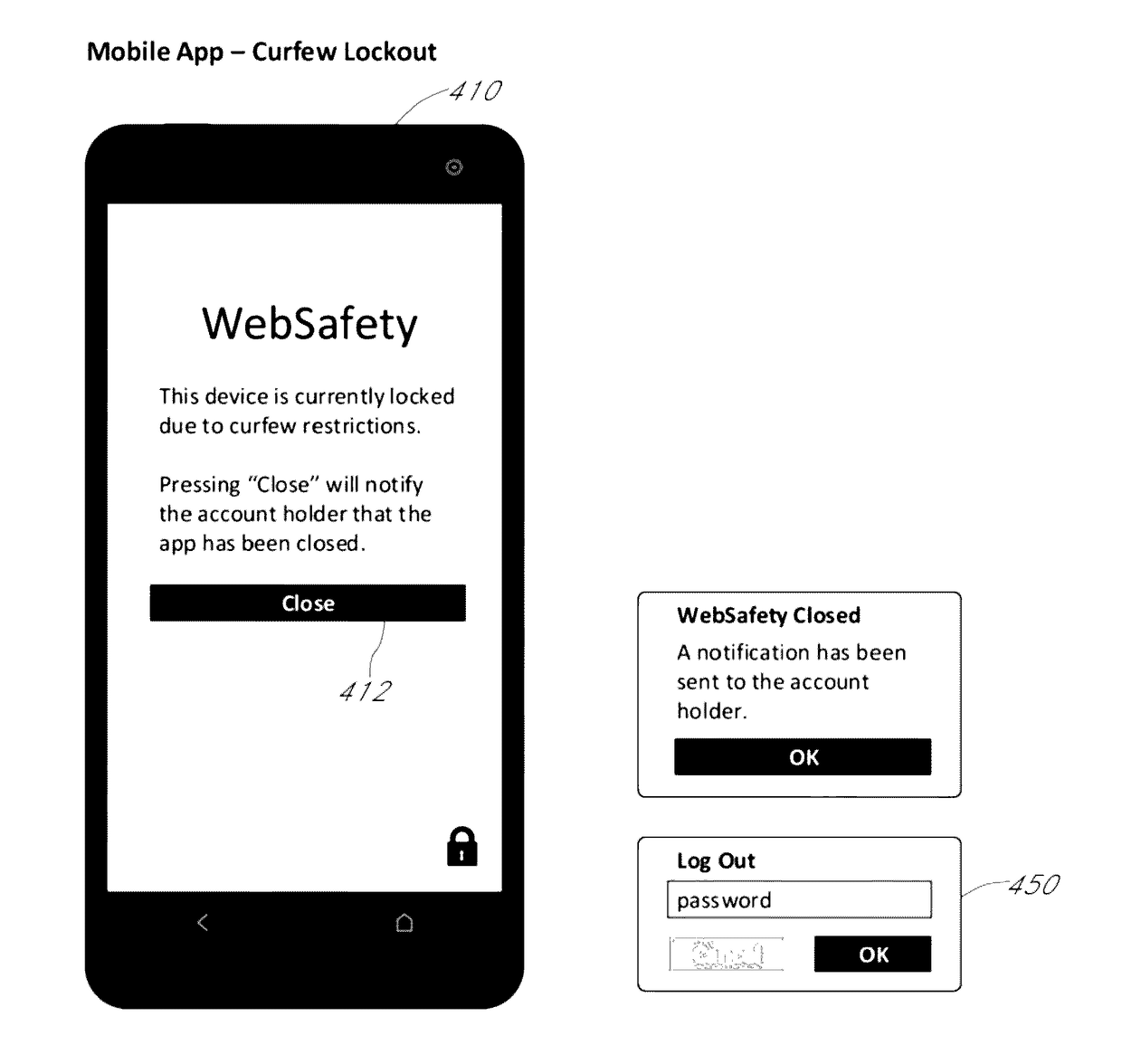Thus, as a result of monitored communications, a
user interface may be controlled, locked, blocked, etc.
Moreover, some operating systems may be more difficult to interface with.
For example, it may be inefficient to monitor radio transmissions, image or video feeds, or location information remotely if the user
system 130 is a
mobile device.
For example, the communication may contain illicit content such as profanity or inappropriate images.
In some examples, the alert results in an objectionable word,
phrase, or image appearing in a feed viewable by a parent and associated with the child, along with the sender of that word or image.
However, sending data continuously may tax battery and bandwidth.
Thus, the system can not only improve safety but it can deter time-
wasting activities and improve productivity.
Log out can be restricted to a parent or an account holder who installed the mobile application and may not be available to any user of the
mobile device.
Parents may not want their children to text after 9 PM or they may not want children to access any applications on a phone after 10 PM on a school night.
In some embodiments, a close button or similar functionality may not be provided and a curfew lockout can be more strict and difficult to avoid, without having the
password or other credential of the account holder.
Further, as a child leave a particular area, the safety system can block some of the functionalities of the user system 130.
Also, in some cases there might be language / cultural misunderstanding.
Moreover, writing a script to perform such tasks may be beyond the skills of even tech savvy parents, especially when dangerous applications are constantly being created and distributed.
The systems described herein can do what caring parents can't, due to technological impediments and time constraints.
For example, a
threat of physical harm may cause a monitor
dashboard to proactively send a text or other message to a parent's phone, using the audio aspect of a
ringing phone to alert a parent to imminent danger for a child.
Parenting is not easy.
Parents are often at a loss to identify and resolve some of the issues that they encounter with their children.
For example, parents might find through the safety system 110 that their children are being bullied or harassed, or that they might be considering drinking or trying drugs.
The more frequent the updates, the more rapid battery resources are used, which can affect battery life of a
mobile device.
Moreover, although in some embodiments a module may be separately compiled, in other embodiments a module may represent a subset of instructions of a separately compiled program, and may not have an interface available to other logical program units.
Internet
connectivity, power, and the safety system installation can be evaluated from the
remote computing system side based on the time since the last communication with the device because it may not be possible for device itself to send an update if any of those values are false.
In some cases, behavior status restrictions can include failure to pay a phone bill or failure to pay in accordance with a usury contract.
In some implementations, the
remote computing system 5540 may not be able to obtain data directly from mobile device.
As a result, the safety application installed on the mobile device may not be able to access activity logs of other mobile applications.
For example, the
remote computing system 5540 may flag inappropriate words or websites in the parsed data.
To circumvent this problem, the remote computing system 5540, alone or in combination with the safety application, can repeatedly lock the mobile device during a short time interval and thereby sabotage the user's
continuous use of the mobile device.
In some implementations, inappropriate content (such as bad words) may also be flagged using the visual indicators.
The parents may not want the child to have certain applications on the iPhone, such as social networking applications.
The child has to repeatedly enter the
password to unlock the iPhone, which may disrupt the child's enjoyment of using the iPhone.
As a result of this disruption, the child may give up on the attempt to unlock the iPhone and not review the content on the iPhone during the curfew hours.
Code can also be distributed in a difficult-to-trace manner, such that the code is difficult to locate as a single
package for ready deletion, isolation, or modification.
 Login to View More
Login to View More  Login to View More
Login to View More 


